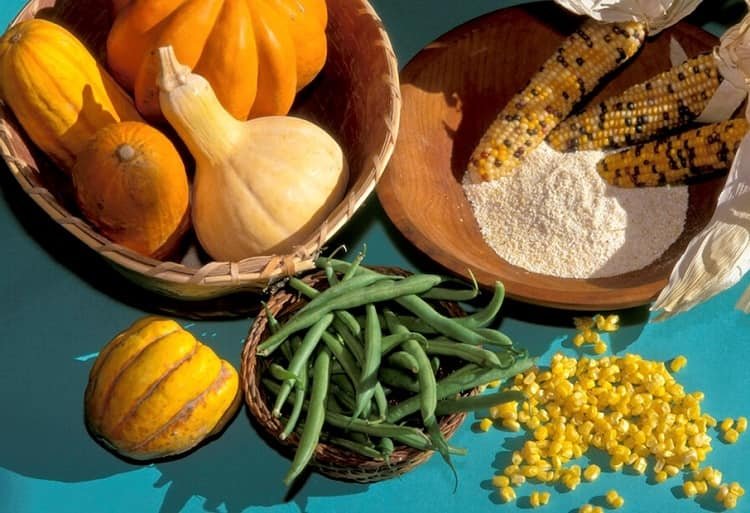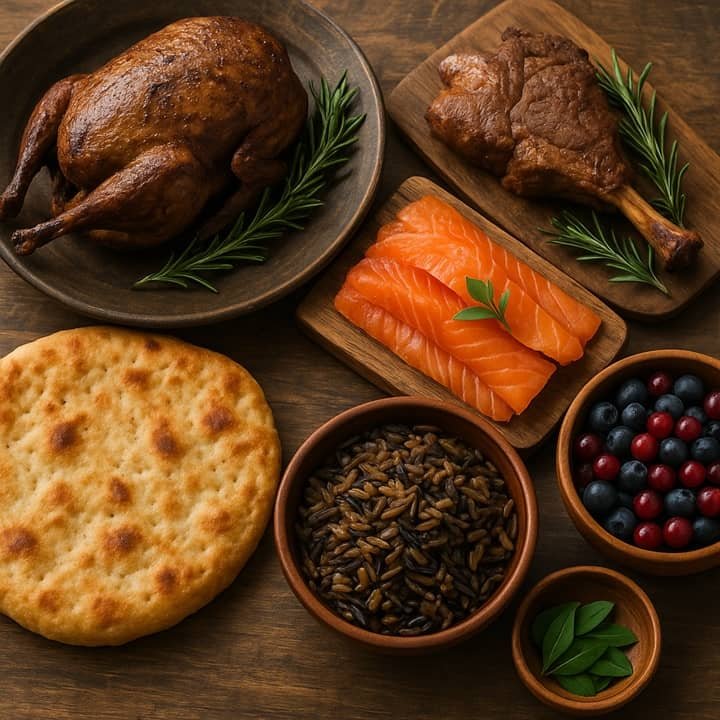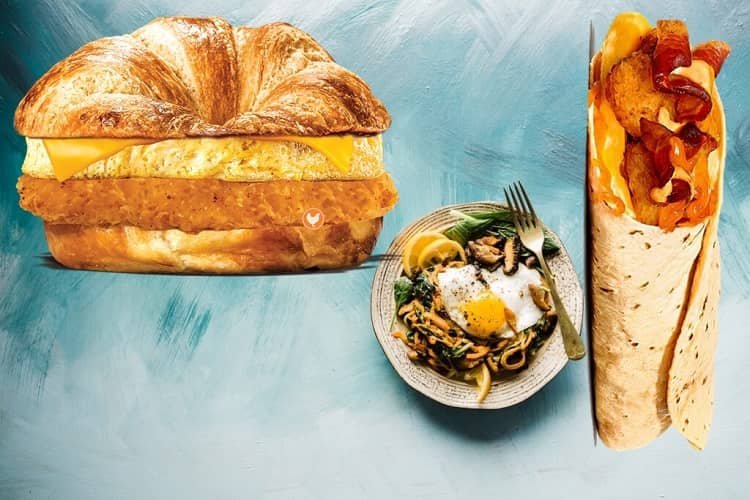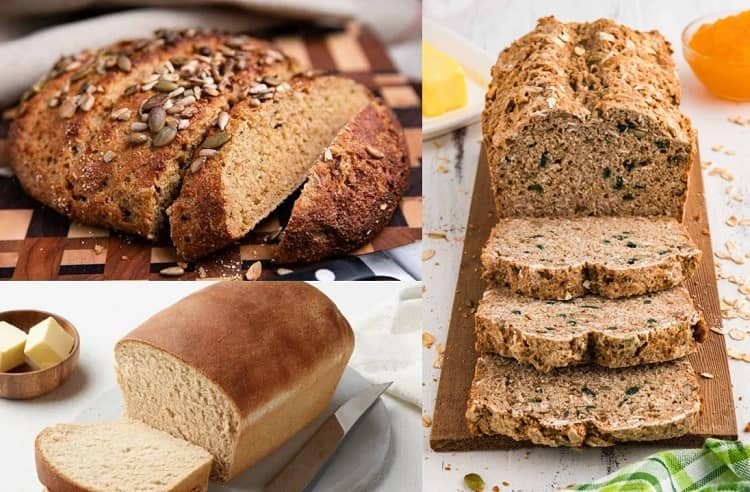Canada’s Indigenous peoples—First Nations, Inuit, and Métis—possess rich culinary traditions that are deeply rooted in the land, climate, and spiritual philosophies. Traditional Aboriginal food is not only a source of nourishment but also a reflection of the interconnectedness of ecosystems, sustainability, seasonal awareness, and community values. Before colonization, Indigenous peoples developed highly sophisticated food systems that allowed them to thrive across Canada’s diverse geographical regions—from coastal rainforests to arctic tundra, prairie grasslands to northern boreal forests.
Today, a revitalization of Indigenous foodways is underway. From ceremonial practices and communal feasts to modern gourmet interpretations by Indigenous chefs, traditional Aboriginal foods remain a powerful testament to resilience, identity, and self-determination.
1. Indigenous Food Systems: Harmony with the Environment
Traditional Aboriginal food systems are built on the principles of balance, respect, and reciprocity with nature. Indigenous groups have long viewed food not as a commodity, but as a gift from the Creator—to be used wisely and respectfully.
Key Characteristics:
- Land-based knowledge: Skills passed down through generations—tracking, foraging, identifying medicinal and edible plants.
- Seasonal cycles: Gathering and preserving foods based on lunar calendars and migration patterns.
- Sustainability: Only taking what is needed and giving thanks in return—whether through ceremony, song, or tobacco offerings.
- Community sharing: Food preparation and consumption were collective acts, fostering unity and social cohesion.
2. Traditional Ingredients by Region
Canada’s vast geography and diverse climates gave rise to equally diverse Indigenous food traditions. Below is a breakdown of some of the major regions and the traditional foods associated with them:
a. First Nations (Eastern Woodlands, Prairies, Northwest Coast)
Staples:
- Game meats: Bison, moose, deer, elk, rabbit, and bear.
- Fish: Salmon (especially on the West Coast), trout, sturgeon, and whitefish.
- Wildfowl: Ducks, geese, turkeys, and grouse.
- Fruits and Berries: Saskatoon berries, blueberries, cranberries, chokecherries, and wild strawberries.
- Roots and Tubers: Wild carrots, cattails, Jerusalem artichokes, and wild onions.
- Grains: Manoomin (wild rice), harvested primarily by Anishinaabe peoples.
- Sweeteners: Maple syrup and birch syrup, used widely in Eastern and Central Canada.
b. Inuit (Arctic and Sub-Arctic)
Staples:
- Marine mammals: Seal, walrus, narwhal, and whale (muktuk—blubber and skin).
- Fish: Arctic char, grayling, cod.
- Land animals: Caribou, muskox, and arctic hare.
- Birds: Ptarmigan and seabirds like murres.
- Berries: Cloudberries, crowberries, lingonberries.
- Seaweed and arctic greens: Consumed raw or cooked.
c. Métis
The Métis culinary identity is a blend of Indigenous ingredients and French/Scottish techniques.
Staples:
- Bannock: A fried or baked flatbread.
- Pemmican: A travel food made from dried meat, fat, and fruit.
- Stews and meat pies: Featuring wild game or domesticated livestock introduced by settlers.
- Berry preserves: Jams and compotes from saskatoon and chokecherries.
- Legume dishes: Split pea soups, baked beans with maple.
3. Iconic Traditional Aboriginal Dishes
Bannock
Possibly the most recognized Aboriginal dish in Canada, bannock is a dense bread originally derived from Scottish pan bread and adapted using Indigenous ingredients like lard or rendered animal fat. It can be baked, fried, or cooked on a stick over fire.
Pemmican
Used by Plains peoples and later fur traders, pemmican is a protein-rich mixture of dried meat (bison or deer), fat, and dried berries. It has a long shelf life and is highly portable.
Muktuk
A traditional Inuit food made from raw or frozen whale skin and blubber, often eaten with soy sauce or other dips today. It’s rich in vitamin C and essential omega-3 fats.
Three Sisters Stew
Symbolizing interdependence, the “Three Sisters” (corn, beans, squash) were traditionally grown together. This hearty stew reflects sustainable Indigenous agricultural knowledge.
Smoked Fish and Roasted Meats
Fish and game were often smoked over open fires, using aromatic wood, or roasted in earth pits. The smoky, rich flavors were complemented by wild herbs and berries.
Moose Nose Soup
Prepared by boiling the moose’s snout for several hours, this delicacy is popular in some Northern communities.
4. Preservation Techniques: Survival through the Seasons
To endure Canada’s harsh winters, Indigenous peoples employed advanced food preservation methods:
- Smoking and drying: Fish, meat, and berries were smoked or air-dried to prevent spoilage.
- Fermentation: Inuit fermented meats in sealskin pouches or underground pits.
- Freezing: In Arctic areas, food could be preserved in natural permafrost.
- Underground storage: Pit caches lined with birch bark or stone helped keep food cool and safe from scavengers.
- Fat rendering: Animal fat (especially from bears and seals) was used to preserve lean meats.
5. Spiritual and Cultural Significance
Food in Indigenous cultures is not just physical sustenance—it is spiritual nourishment. Many communities maintain that food is sacred, and its preparation is ceremonial.
Cultural Contexts:
- Potlatches (Pacific Northwest): Community feasts involving generous gift-giving and displays of food abundance.
- Feast of the Dead: In some Haudenosaunee cultures, food is prepared for spirits of the deceased.
- Tobacco offerings: Given before a hunt or plant harvest to show gratitude to the Creator.
- Seasonal feasts: Celebrations of planting, harvesting, or fishing seasons.
Food was often tied to oral histories, mythologies, and clan teachings, reinforcing a cyclical understanding of life, nature, and renewal.
6. Colonial Impact on Indigenous Foodways
Colonization caused a catastrophic rupture in Indigenous food systems:
- Land dispossession: Removal from traditional territories disrupted access to hunting, fishing, and farming.
- Residential schools: Children were fed poor diets and denied traditional foods, leading to cultural and physical malnutrition.
- Environmental degradation: Overhunting, mining, deforestation, and damming projects destroyed ecosystems.
- Loss of autonomy: Indigenous peoples were often forced onto government rations high in sugar, salt, and processed flour—leading to diabetes and other health problems.
These colonial disruptions created intergenerational trauma and food insecurity that persist today.
7. Indigenous Food Revitalization: Reclaiming Tradition
Despite centuries of adversity, Indigenous communities are actively restoring their food traditions, often as a form of cultural sovereignty.
Key Initiatives:
- Seed-saving programs: Restoring heirloom Indigenous crops.
- Community gardens: Reclaiming land and food literacy.
- Elder-led cooking classes: Teaching traditional recipes and knowledge to youth.
- Land-based education: Programs that incorporate hunting, fishing, and foraging into school curriculums.
Indigenous Culinary Artists and Chefs:
- Chef Rich Francis (Top Chef Canada): Fuses Haudenosaunee cuisine with contemporary flair.
- Chef Shane Chartrand: Author of Tawâw, exploring Indigenous identity through food.
- Chef Christa Bruneau-Guenther: Owner of Feast Café Bistro, highlighting urban Indigenous foodways.
8. Modern Interpretations and Fusion Cuisine
Today’s Indigenous cuisine is not about “living in the past” but bridging ancestral wisdom with modern creativity.
Examples of fusion dishes:
- Bison burgers with wild rice buns.
- Arctic char sushi rolls.
- Blueberry-braised venison.
- Bannock tacos (also known as “Indian tacos”).
- Maple syrup-glazed duck.
Restaurants, pop-ups, and festivals are giving Indigenous cuisine national and international platforms.
Restaurant Menu Covers Canada – Complete Buying Guide for Restaurateurs, Cafés & Caterers
9. Region-by-Region Highlights
British Columbia
- Salmon (smoked, candied, cedar-plank roasted).
- Shellfish and kelp-based dishes.
- Pit-cooked camas bulbs.
Alberta/Saskatchewan/Manitoba
- Bison stew.
- Wild rice pilafs.
- Chokecherry syrups and preserves.
Ontario/Quebec
- Game meats like bear and venison.
- Corn soup, wild rice dishes, maple syrup.
- Cornbread and frybread.
Atlantic Canada
- Eel, lobster, and herring.
- Birch syrup and coastal greens.
- Seaweed-based broths.
Arctic and Subarctic
- Muktuk, seal, fermented fish.
- Caribou roasts and stews.
- Frozen berries and seaweed.
Meal Replacement Shakes for Weight Loss in Canada
10. Traditional Food and Health
Reviving traditional diets has significant health benefits for Indigenous populations struggling with chronic disease due to colonial dietary changes.
Health Benefits:
- High in lean protein and omega-3 fatty acids.
- Naturally low in refined sugar and sodium.
- Antioxidant-rich (berries, wild greens).
- Encourages physical activity (harvesting, fishing, etc.).
Community Programs:
- Diabetes prevention through cultural food literacy.
- “Food is Medicine” campaigns.
- Nutrition workshops led by Indigenous dietitians.

Image credit to https://www.theindigenousfoundation.org/articles/indigenous-food-sovereignty
11. Resources for Learning and Engagement
- Books: “The Sioux Chef’s Indigenous Kitchen” by Sean Sherman; “Tawâw” by Shane Chartrand.
- Websites: Indigenous Culinary of Associated Nations (ICAN), Native American Food Sovereignty Alliance.
- Documentaries: “Gather”, “Rumble: The Indians Who Rocked the World” (for cultural context).
- University programs: Indigenous culinary training at various Canadian institutions.
- Workshops: Foraging tours, traditional cooking sessions, seed exchanges.
Conclusion
Traditional Canadian Aboriginal food is a mosaic of resilience, memory, identity, and survival. It tells stories of connection—to land, community, spirituality, and heritage. As the Indigenous food sovereignty movement grows, so too does the understanding that food is not only about sustenance—it is about reclaiming language, culture, and the right to thrive.
Supporting Indigenous culinary traditions—whether through education, dining, or activism—is one step toward reconciliation and collective nourishment.
Heart to Home Meals Locations in Canada – A Comprehensive Guide
Frequently Asked Questions (FAQs)
Q1: What are some traditional Indigenous Canadian foods?
A: Bannock, pemmican, smoked fish, wild rice, muktuk, bison stew, and Three Sisters soup are some widely known traditional dishes.
Q2: What is bannock, and is it traditionally Indigenous?
A: Bannock is a pan-fried bread adapted from Scottish settlers but widely adopted and modified by Indigenous communities using local ingredients like animal fat.
Q3: What are the “Three Sisters”?
A: The Three Sisters are corn, beans, and squash—planted together for mutual benefit and used in many traditional dishes, especially by Haudenosaunee and Anishinaabe communities.
Q4: Are traditional Indigenous foods healthy?
A: Yes. These diets are high in protein and nutrients and low in processed ingredients, supporting strong physical and mental health.
Q5: What caused the decline in traditional food practices?
A: Colonization, forced relocation, residential schools, and environmental damage led to the loss of land, access to food sources, and traditional knowledge.
Q6: What is pemmican?
A: A mixture of dried meat, rendered fat, and berries used as a portable, long-lasting energy food by Plains peoples and Métis traders.
Q7: What is muktuk, and who eats it?
A: Muktuk is a traditional Inuit food made from whale skin and blubber, rich in nutrients and often eaten raw or frozen.
Q8: Where can I try Indigenous food in Canada?
A: Restaurants like Feast Café Bistro (Winnipeg), Kū-Kŭm Kitchen (Toronto), and food festivals such as Indigenous Food and Art Market showcase authentic Indigenous cuisine.
Q9: How can I support Indigenous food revitalization?
A: Support Indigenous-owned businesses, attend cultural events, educate yourself through books and documentaries, and advocate for Indigenous land rights.
Q10: Is wild rice the same as store-bought rice?
A: No. True wild rice (manoomin) is a grass native to the Great Lakes region and holds ceremonial importance for the Anishinaabe people.





